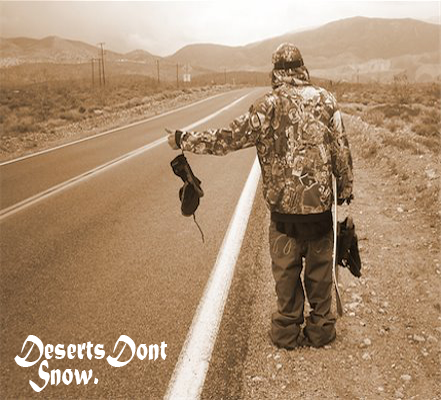
By now you have probably heard of Twitter, a social media application that let's you review updates from hundreds or even thousands instantly; at the other end of the wire, hundreds or even thousands can instantly view your updates as well.
Those who are already on Twitter, and get caught tweeting, are met with one of two mindsets: "What is Twitter?" or "I hate Twitter". The haters have an excellent reason to hate, since it's easy to assume from a constant onslaught of internet marketers that there is nothing more to Twitter than a bunch of con-artists trying to sucker people.
Believe it or not Twitter is an incredibly powerful tool. It is a social extension that opens doors to friendships and opportunities, and it delivers these in a relatively passive manner.
Snowboarders can reap enormous benefits by joining Twitter, and if you haven't started an account already than hopefully after reading this you will reconsider. If you do have a Twitter account but never got around to making the thing "work", maybe this article can help point you in the right direction...
Interact directly with companiesIt used to be that you had to keep up with magazines or be heavily involved in the industry to stay up to date. With the internet things became easier when magazines, private sites, and company blogs started bringing us information almost instantly. Now Twitter brings things one step further and faster by allowing companies to engage us directly.
No more rumors or fuzzy press releases; with Twitter snowboard companies are able to announce product launches, team updates, tech updates, factory videos and more instantly! Follow your favorite companies or follow every company and you can get the inside scoop on all of the latest and greatest in the industry.
It's more than just letting the company feed you information; your Twitter account is your one-to-one connection with companies. Didn't like how a product worked? Have a suggestion for improvements? Use Twitter to send direct messages and become more than just a consumer.
Are you a fan of free gear? In the past month my Twitter account has seen at least twenty product giveaways. From Q+As to treasure hunts, this is great way to score an extra pair of gloves, goggles, boots, outerwear, bindings and even a new snowboard.
Snow reports, lodging and pass discounts instantlyAll of your local resorts are probably on Twitter. It's October, which means everyone is speculating on resort activity and predicting opening days. Remember that saying, "A watched pot never boils"? Why not just let your resorts tell you what they are up to directly?
Resorts are also using Twitter to offer special discounts and promotions on anything from lodging, to lift tickets, to season passes. We can't all own luxury condos at Vail, and sometimes rentals and hotels seem like they cost almost as much. This is a great way to afford that snowboard trip you canceled because you couldn't afford it.
Make friends with your airlinesSince the majority of the world is not snow capped mountains, this means that many of us must travel to destinations in order to get some turns. Transportation can be a huge expense, especially with our airlines new baggage policies (that can tack on over $100 to bringing your snowboard gear with you).
Most of the major airlines are on Twitter, and you can bet the majority of their tweets are on new flights, discounts and other promotions.
Just flying to your destination won't necessarily get you to a resort. Car rental agencies are also on Twitter, and just like the airlines, here is another chance to save a little money on your next snowboard vacation.
Expand your horizonsMaybe one of the bigger reasons people don't live the dream of following the snow is that they are relatively clueless as to where to start. Do you need training? What positions are there in the snowboard industry? How do you go about moving to a resort town?
Resorts have taken to Twitter as a means to instantly engage potential employees. Some resorts like A-Basin, @
WorkattheBasin, have accounts dedicated to human resources. Let these companies bring the opportunities straight to you, and have a platform to request more information.
You don't have to work at a resort, though. Occasionally you will come across a tweet from your favorite snowboard company that they are immediately hiring. Twitter offers an even greater chance to break into the industry and make money doing something you love.
Never ride alone again.You'd be surprised how many snowboarders are on Twitter. Search for local riders and find new friends to shred with; meet filmers, photographers and other behind-the-scenes industry types or you can even follow some pro snowboarders.
Using Twitter as a social network requires a little more active effort on the user's part. You will have to post regular updates of links, videos and general statements that make you, you; this is what interests people and encourages them to follow you. You will also want to reply to other user's tweets, which means you want to make sure the people you follow interest you.
One of the mistakes new users make with Twitter is feeling obligated to follow everyone who follows you. Things grow very boring, or the account becomes overwhelmed with link posts from marketers. Make sure that whoever you follow, they share interests or commonalities with you... that is the biggest secret to Twitter.
Whether you are looking to sit back and collect updates to score gear, discounts or even jobs; or you are hoping to play an active part in meeting new friends and connecting with companies, Twitter has a lot more to offer your average snowboarder than many give credit.
If you do head over Twitter, be sure to look me up @
desertsdontsnow.























































